If you are puzzled by the image that you see below then you would not be the only one. Whilst walking along the cliffs at Ogmore beach this afternoon we noticed some strange looking structures on the rocks below. A quick glance with the binoculars seemed to suggest a sponge like covering over large areas. This just didn’t seem plausible so we headed down for a closer look.
What we found was quite amazing. Large swathes of the recently uncovered foreshore were covered in structures not dissimilar to coral reefs. Some of the groupings were at last waist high and a good three of four meters across. As you can see from the picture above though these structures were anything but coral. They were in fact hundreds if not thousands of tiny tubes with walls made from single grains of sand, rock and shell. The workmanship was simply astonishing and must rank up there as one of the most intricate things that I have ever seen mother nature create. I quickly realised that these tubes must be home to some sort of creature; a conclusion that was further borne out by some careful listening. When the wind dropped down it was possible to hear small scraping noises coming from within some of the tubes.
A bit of research on the interweb this evening and I have the culprit for these engineering masterpieces; the Honeycomb worm or Sabellaria Alveolata. These are marine filter feeding worms that live in tubes of sand that pack together to form the reefs that I had seen. The grains of sand that make up the tubes are held together by a mucus which the worm generates and secretes from its lobed mouth. Amazingly they can live for up to nine years and feed by popping their feathery feeding tentacles out of the tube end when the tide covers the reef. As long as their is a good supply of sand a reefs position remains relatively stable as successive generations add their own tubes. Over time other species of marine life also come to rely upon the reef for protection. I certainly saw plenty of anemones tucked into the crevices of these reefs.
As the picture above left shows, the tubes quickly absorb anything that is in their path. This pair of sandals were well and truly stuck in position whilst other areas had incorporated large shells and other pieces of beach detritus. The Honeycomb Worm stretches along our coasts from south west England to the Solway Firth and east to Lyme Bay. Unfortunately there are concerns about its population with numbers dropping across its range. Much of this is down to the structures fragile nature leaving it susceptible to coastal developments or just plain old trampling by beach users. I know that I will certainly be keeping my eyes out for it in the future.
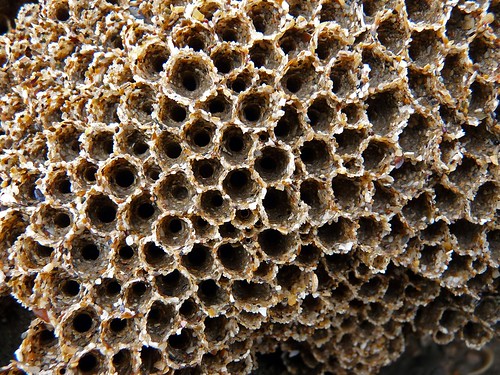
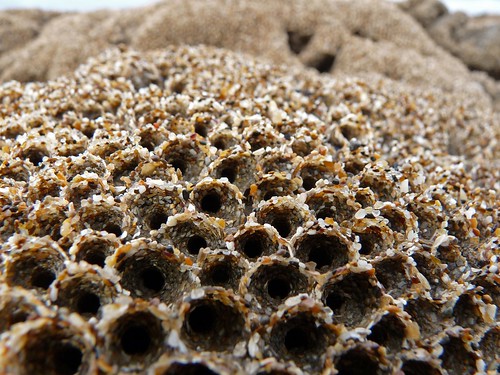
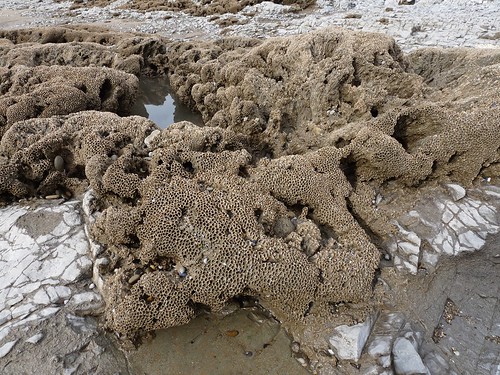
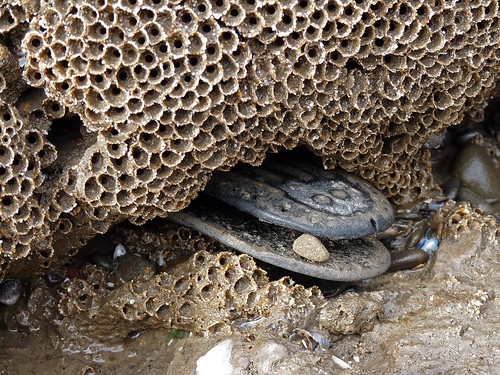
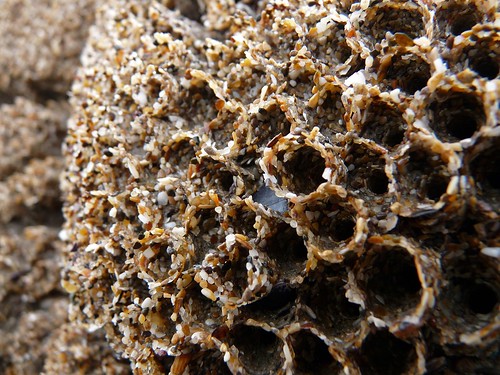



0 Comments